Headen, I. E., Dubbin, L., Canchola, A. J., Kersten, E., & Yen, I. H. (2022). Health care utilization among women of reproductive age living in public housing: Associations across six public housing sites in San Francisco. Preventive Medicine Reports, 27.
Abstract
Housing is a key social determinant of health and health care utilization. Although stigmatized due to poor quality, public housing may provide stability and affordability needed for individuals to engage in health care utilization behaviors. For low-income women of reproductive age (15–44 y), this has implications for long-term reproductive health trajectories. In a sample of 5,075 women, we used electronic health records (EHR) data from 2006 to 2011 to assess outpatient and emergency department (ED) visits across six public housing sites in San Francisco, CA. Non-publicly housed counterparts were selected from census tracts surrounding public housing sites. Multivariable regression models adjusted for age and insurance status estimated incidence rate ratios (IRR) for outpatient visits (count) and odds ratios (OR) for ED visit (any/none). We obtained race/ethnicity-specific associations overall and by public housing site. Analyses were completed in December 2020. Public housing was consistently associated with health care utilization among the combined Asian, Alaskan Native/Native American, Native Hawaiian/Pacific Islander, and Other (AANHPI/Other) group. Public housing residents had fewer outpatient visits (IRR: 0.86; 95% Confidence Interval [CI]: 0.81, 0.93) and higher odds of an ED visit (OR: 1.81; 95% CI: 1.32, 2.48). Black women had higher odds of an ED visits (OR: 1.32; 95% CI: 1.07, 1.63), but this was driven by one public housing site (site-specific OR: 2.34; 95% CI: 1.12, 4.88). Variations by race/ethnicity and public housing site are integral to understanding patterns of health care utilization among women of reproductive age to potentially improve women’s long-term health trajectories.
Last updated on 07/16/2022

